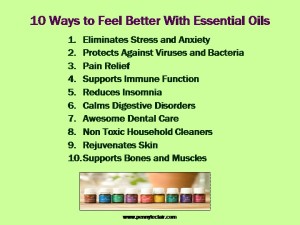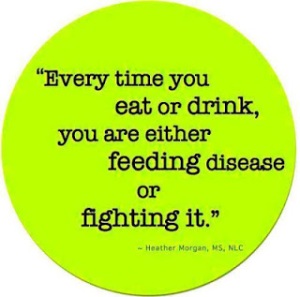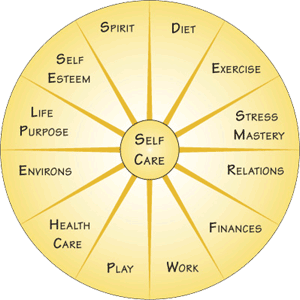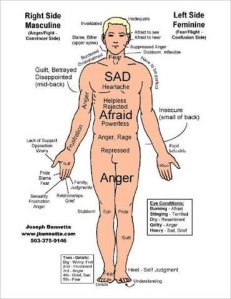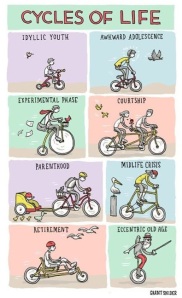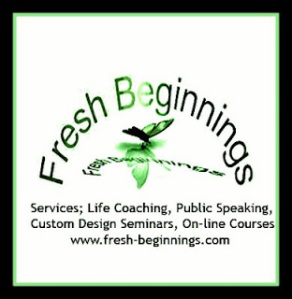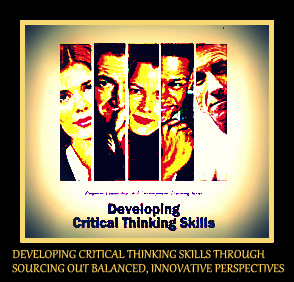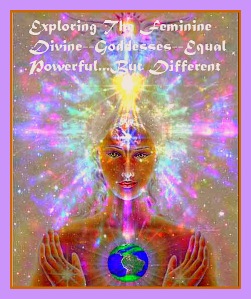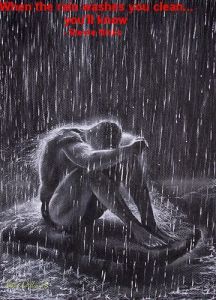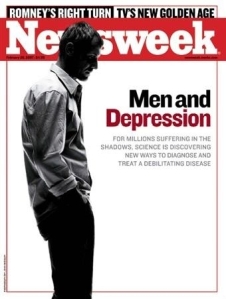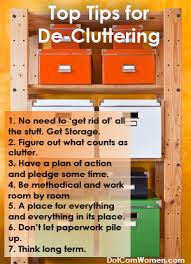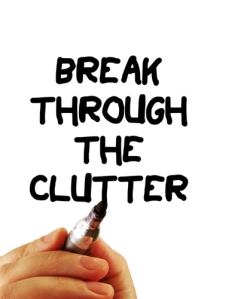Youthful Aging by Nourishing Body, Mind and Spirit
This article was previously published in the Aquarian newspaper and I have permission to use in through my own sources.
By Coralie Raia Darsey-Malloy
In youth we learn;
In age, we understand.
— Marie Von Ebner-Eschenbach
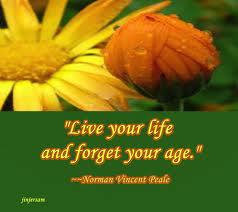
How many times we have been around the sun does not have to define how youthful and vibrant we can be.
Retirement is a foreign concept because neither David nor I plan to retire. We know that it is only “work” when the enjoyment in the task is not there. The rewards we have in the work we do as life coaches, communicators, seminar leaders and public speakers is so rewarding there is no desire to retire. Over the years, we have presented course material to people in advanced years and they are a great example of how anyone can remain youthful as they age. We wrote and produced a variety of seminars for Creative Retirement Manitoba (CRM) for a number of years. Pariticpants there had a “youthiness’ energy and drive that was ageless and timeless. Interactions with them inspired the name of our course on “youthing versus aging.” These “youthers” had an impact on how we are choosing intend to live as we march through time.
One of the outstanding examples was a group of seniors in their late sixties and early seventies who decided to take a course in Tai Chi. Initially felt intimidated at the thought of moving their stiff, sore bodies in new ways. However, as daunting as initial stages were, they valiantly carried on. I recall members of that core group sharing how they were amazed that seven years later they were in better shape than when they began. They continue to provide inspiration for new members by getting on buses in the middle of winter and traveling to rural areas to teach others remain strong and healthy.
Another inspiring woman was a stylish woman gal we assumed was in her late fifties or early sixties. She was physically active, an avid reader with an inquiring mind. She was studying quantum physics–and made heads turn with her flair and style. As a fellow hat lover, I appreciate her collection of hats that she often combined with and pant boots with tasteful studs on her denim outfits. She did not give the impression of an older woman trying to look young, but rather she looked woman who had the confidence to choose clothes that made a statement.

Life is a constant series of choices. Those who youth with vitality and resiliency understand that and do not allow age to define them.
It was a surprise to discover her true age during one of our classes. She was saying how indignant about a heel spur her doctor found. While expressing her frustration to participants in the class about how it was slowing her down, one of her friends responded by saying, “Well what do you expect at YOUR age of eighty-six.” In a calm voice her reply was, “Part of why I am shocked and upset is because, unlike many of you, I refuse to accept that aches, pains and even bone spurs have to become a reality within my aging process. I intend to have the damn thing removed and keep on being active until I decide to check out of here. So there! It is that attitude that has a bearing on youthful aging versus “getting old.”
Throughout our shared path David and I know for sure that time does not have to be toxic. We strive to maintain balance and moderation in all things and we’re stronger than in our youth. Granted, we are fortunate to come from a good gene pool and that according to research that helps. Having said that, I look back to my youth and earlier experiences and I marvel that my body is in as good a shape as it is. being were a more worthwhile goal than being thin. As I began putting my energy into healing my inner world and making peace with my body, I noticed that concerns with aging and outer appearances faded in significance. Through time, I began to see that who we are on the inside is far more important than any outer form. Once I wrapped my brain around that one, I was finally free to be me in ways that were not possible when I was younger. The choose not to buy into the bias of ageism and stereotypical thinking there is less emphasis on appearance and greater focus on how the body functions over outer appearances. Winkles and less than toned skin pale in comparison to illness and death.
There is another perspective on youthing versus aging a self-responsible and self-reliant approach to healthy living. Eating whole, natural foods, drinking purified water, supplementation, balancing personal and professional commitments, having time to rest, re-charge laughter, prayer and meditation are co-factors that support health and well-being. David and I strive to connect with like-minded others that enhance rather than drain energies. Trustworthy friends assist us in staying grounded through the difficulties in life. Whenever anyone makes healing, strength, balance and resiliency their primary goals, they thrive. They do not allow age to define who they are, how they live and even dress. Age brings wisdom and the confidence to be whom we are whether others approve or not. The way David and I feel about aging is that it is the best thing that happens to any of us when we accept it as just a number not a death sentence. How many times we have been around the sun does not have to determine whether we will achieve many of our unexplored potentials…only we decide that. I remember my Mom querying her peers as she wound down her life at Riverview Health Centre, “How old would you be if you didn’t know how old you are?” As I contemplate the answer to that question, I have made a firm commitment not to let my years according to the calendar become more important than the age we feel.
The quote below is an eloquent summation by an active centenarian in Health News and Review, “So-called age is simply the deterioration of enthusiasm, faith to live, and the will to progress.”
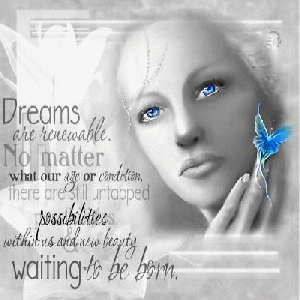
Believing in the power and beauty of dreams and hopes and striving to achieve them gives a purpose to life and keeps us young at heart. It is never too early or too late to look and feel great!
Enthusiasm, faith and will power can be a prescription for longevity if we are willing to implement them. How about you? Are your fifties going to be fabulous, sixties sensational? Seventies spectacular? Eighties expansive? I think you get the idea. State your intent then make passions happen at any age and stage of life and each decade can be exciting journey rights until the last breath.
12 Ways to Feel Better with Essential Oils
Essential oils provide a wide variety of healthy, beauty, mental, emotional and physical support. They are wonderful alternatives to toxic cleaning products as well.
By Coralie Raia Darsey-Malloy
David and I have been using pure essential oils as a compliment to our other healthy living products. They are a cost efficient way to support the mind and body and provide clean alternatives to beauty products and household cleaners. Here are 12 quick tip pointers about a few of the benefits they provides.
Essential oils are very concentrated and many are used with carrier oils. It is important to research any company and their products to make sure they are pure oils and not combined with toxic additives. There are many reputable companies with long standing reputations for quality oils but it is up to the consumer to source them out and ask questions before using them. It is advisable to apply small test patches to eliminate allergic reactions.
1. Alleviates stress and anxiety. Bring peace and balance to your emotions without negative side effects.
2. Shield your body from bacteria, viruses, fungi, and parasites. Studies find that essential oils are effective against MRSA, the methicillin resistant staphylococcus aureus superbug. This bacterium has mutated so effectively that it is resistant to most antibiotics, including penicillin.
3. Experience natural pain relief when gently massaged into sore and tired muscles.
4. Potent against Inflammation. Helps alleviate inflammation that causes pain.
5. Support your body’s Immune System naturally
6. Ward off Insomnia. Lavender out performs common drugs in promoting sleep, enhancing relaxation, and decreasing anxiety, according to the 1988 International Journal of Aromatherapy. Apply a few drops topically and sprinkle on a pillowcase to promote restful sleep.
7. Rejuvenate your skin. Essential oils have been used for thousands of years for restoring and improving damaged skin. Beneficial for clogged pores, eczema, acne, dry skin, freckles and stretch marks.
8. Soothe Digestive Disorders. Rub essential oils onto the abdominal area to relieve digestive upsets. Ingest a few drops of therapeutic grade essential oil in water to provide relief for heartburn, gas, indigestion, diarrhea and irritable bowel disease.
9. Support Your Bones and Muscles. 50% of our body weight is muscles and our skeleton has 206 bones. When stressed or overworked, apply to the affected area for strong skeletal and muscular support.
10. Superior Dental and Oral Care. Research has shown that oral bacteria can cause heart disease. More bacteria live on the back of the tongue than any other part of the body, and proper cleaning and flossing can do much more than protect the teeth. Essential oils in Young Living mouthwash and toothpaste help kill microbes that cause tooth decay.
11. Increase Your Mental Clarity. Exciting clinical studies are proving that the inhalation of peppermint oil daily increases students test scores by 28%. Keep your edge in the workplace by breathing Peppermint during work.
12. Provide affordable safe alternatives to household cleaners. Replace chemical cleaners with the powerful antimicrobial activities of essential oils
Healthy choices for healthy living
By Coralie Raia Darsey-Malloy and David Malloy
Everyone wants independent choice…
whatever that may cost…and wherever it may lead.
–Fyodor Dostoyevsky
When I began my quest for health and wholeness in the mid-eighties some did not consider valid. Much of it fell under the umbrella of ‘fringe new age thinking” and mainstream society was suspicious and refused to consider it. When David and I met in 1990 I made his head spin with my concern about the free radicals and the high glucose factor in his diet. I rambled on about that and the importance of low fat, moderate carbohydrate diet and using food combining as a way to lose weight. He has a knack for researching balanced perspectives and once he understood the validity in some of it, he modified his thinking. With the growing interest in health, wellness and whole person healing mindsets are changing. Mind-body health is merging with traditional medicine and complimentary healing systems. Many physicians are open to them within patient care.
Trends in medicine are moving towards sensitive patient care with a multitude of options that were not available even twenty years ago. The emerging changes in preventative health and wellness techniques can and does compliment today’s precision diagnostic services. Inevitably, professional patronizing, and obscure terminology will give way to cooperative educational approaches, and client-orientated therapies. Future medicine like future world politics, will increasingly acknowledge choice making and empowerment of the individual.
Within the changing dynamics in health care there is much we can all do to optimize our own and well-being. Simple changes such as eating cleaner food in smaller portions, managing stress and maintaining fitness levels keep the wheel of life in balance. People are awakening to the importance of avoiding harsh chemicals in our food and cleaning products. It is now common knowledge that smoking, too much alcohol, fats, sugar, salt and processed food breakdown rather than build up the body. Breakthroughs in health care reveal that many of the diseases and ailments are easier to manage through positive lifestyle changes over symptom relief and prescription drugs.
Living a long, healthy and productive life are reasonable expectations through self-reliant care and responsibility for one’s health. It is important for each of us to research information and maintain authority for the path we choose to take whether some in the medical model agree or not. There have been numerous times in the past where physicians and surgeons were pushing for surgery on David’s neck, our knees, exploratory biopsies and a myriad of other tests we did not feel we needed. Instead, we chose to support our bodies through physiotherapy, acupuncture, strengthening, stretching and massage and we are both going strong many years later without the need for surgical intervention. There is a cautionary note in this and again, we emphasize the importance of making informed choices about the options and possible outcome with any chose modality.
As communicators, we always encourage clients to discuss their health challenge with reliable, professional individuals in both the medical and complimentary healing models before proceeding and weigh the pros and cons of any system. Health is not a right…it is a responsibility. The growing acceptance in whole-person healing continues to evolve and its cooperative approach liberates and unites. Today personal fitness and healing practices once considered outlandish are gaining mainstream credibility—because they work. Large corporations are underwriting relaxation and stress management courses to reduce employee absenteeism. Insurance companies offer financial incentives to non-smokers and aerobic dancers. Healing in the 21st century will witness the final convergence of science and psychology, body and soul.
As science, medicine, biology of emotion and thought, humor, health and healing attitudes merge, they are now plausible co-factors in any healing system. Growing numbers are awakening to the reality that symptom relief, drug therapy, invasive procedures are the last step over the first as they once were. New attitudes and modalities provide hope in the form of simple, yet powerful whole-person self-care systems. They are often equally or more effective than prescriptions and are cost effective, encourage self-responsibility, do no harm, educational, fun and provide positive outcomes! With the exploration into mind-body health, there are alternative ways to achieve health, wholeness and abundant living for those willing to explore options and think outside the box.
The Inner Pilot Light as a Foundation for Whole Health
By Coralie Darsey-Malloy & David Malloy
Our work in the personal development field involves a whole person approach to healthy, dynamic living. We encourage the people we work to assess their life in a wheel with different spokes where their energy glows out from their core essence. It is difficult to have a good quality of life when the body, mind and spirit are out of balance. When any aspect of the self is creating discomfort, it interferes with the ability to fulfill one’s life purpose or to channel energy in creatively satisfying endeavors.
However, after many years of working in the health and wellness field with clients from all occupations we have opportunities to witness how people live their lives through the choices they make. The relationship between vibrant, radiant whole health and degrees of sickness and disease is immense and complicated.There is a constant interplay between the mental, emotional, spiritual, physical and energetic fields and they come together when we tune into the Inner Pilot Light within our core essence and assess what aspects of life are and are not working and take health-promoting steps to align them. In our view, the authentic self assists us in bringing the inner landscape and outer aspects of life into harmony.
The Inner Pilot Light is the either core essence of who we are and the foundation we build upon or breakdown through misuse and lack of mindful choice making. Without it, people eventually discover that they are not getting where they want to be because they are attempting to create a firm foundation on shifting sands.
For more information about the healthy, dynamic living services, we provide check the Fresh Beginnings Personal Development Website at http://www.fresh-beginnings.com
Balanced, Innovative Perspectives
By Coralie Raia Darsey-Malloy and David Malloy
We have been working together in the media as television talk show hosts and producers, writing, producing and presenting seminars, public speaking, free-lancing and reporting for local newspapers since 1990. When we started in the field one of our mentors was an old time reporter and he always emphasized the importance of balanced fact finding without personal opinion in the articles. That approach has stayed with us and we carry it through in everything we write, produce and present to the public. In our view much of what is trending in the media and politics today is filled with more commentary than balanced, innovative reporting. We created this blog and other related links so we could gather and present perspectives in innovative, ways.
Clients and followers often ask how to determine what balanced perspectives actually are. Here are some of the definitions and guidelines we strive for in gathering information to share with others are outlined below. When speaking of balanced the image that often comes to mind is the scale of justice. Ideally, it does not tip too much in either direction and we keep the scale of justice in mind when sourcing out information. Our goal is to present information in a balanced way that encourages critical thinking skills so clients and readers make informed choices.
The scale of justice symbolizes justice and the ability and power to make informed decisions. Sharing balanced innovative perspectives requires a presentation of ideas within state of equilibrium or equipoise; equality in amount, weight, value, or importance. We are active participants in social media and frequently bear witness to those who either silently or openly resist any opinion other than their own. The loud clunk and the sound of minds closing reveals they are not interested in the facts because their minds are made up. Whenever we observe polarization in conversational styles, it is clear they are heavily invested in their current mindset. So much so that they are unable to respect what anyone else thinks. Whether it is conspiracy theorists, fear-mongers, religious zealots, gun fanatics or a whole host of other dogmatic ideologies for many out
Words hold great power and as communicators and motivators it is always enjoyable when ideas are expressed in balanced ways that lead to pleasing harmonious proportions where clauses, phrases, ideas, etc. have parallel constructions for rhetorical effect. When presenting ideas we find a rightness of conviction without a respect for differing viewpoints is not respectful and at times the self-important and authorities ring is arrogant and irritating to those looking for middle ground through critical analysis. Comparatively speaking when there is openness to opposing views or equal-opportunity presentations through factual data content it has a more harmonious feel when listening and reading.
Whenever ideas are presented in balanced, innovative ways it allows the readership to sift and sort through the information and commentary in ways that comparess ideas in relative importance and value. There is always more than one angle to any story and keeping things in a healthy balance involves the ability to think outside the box of conditioned thinking and keep things in a state of equilibrium. From our perception it is not so much about winning the argument as it is getting to the truth through critical thinking and fact checking. It is something we strive for in all we are and do.
As life coaches, motivational speakers and seminar leaders we share a commimtent to fosterog a more universal sense of community by honouring differences, encouraging people to open their hearts and minds and sharingtheir knowledge, culture, beliefs and perspectives through respectful dialog. For more information about who we are and what we do check out the website for our personal development company Fresh Beginnings: www.fresh-beginnings.com and a book Coralie wrote about her spiritual journey to health and wholeness that became the foundation for Fresh Beginnings to build upon. www.ibtbook.com
.
Awakening Your Inner Goddess
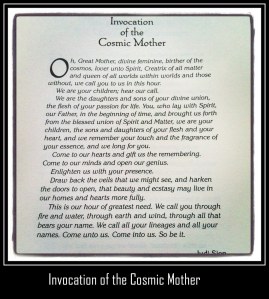
Awakening to one’s Inner Goddess begins with the ability to embrace the Feminine Divine. Her presence balances male and female energies for both genders.
“Our deepest fear is not that we are inadequate. Our deepest fear is that we are powerful beyond measure. It is our light, not our darkness that most frightens us. We ask ourselves, ‘Who am I to be brilliant, gorgeous, talented, fabulous’? Actually, who are you not to be? You are a child of God. Your playing small does not serve the world. There is nothing enlightened about shrinking so that other people won’t feel insecure around you. We are all meant to shine, as children do. We were born to make manifest the glory of God that is within us. It’s not just in some of us; it’s in everyone. And as we let our own light shine, we unconsciously give other people permission to do the same. As we are liberated from our own fear, our presence automatically liberates others”. -Marianne Williamson
For thousands of years, the world has been ruled by patriarchal societies. These masculine rulers have created wars, power struggles, destruction, pollution, fear, pain, separation and famine. They have shown little or no respect for feminine wisdom or our Mother Earth. The patriarchal organizations of the world have repressed most knowledge of women’s roles in world history.
It is time for the pendulum to swing back towards the Divine Feminine and rest comfortably in the middle. To become whole, we need both the Divine Feminine and the Divine Masculine energies equally in our lives.It is without a doubt that our religion and culture have made a huge impact on how women perceive their worth. As a child, I remember hearing Bible stories about women and feeling their shame. The words “unclean”, “slave” and “concubine” were heard a lot. In the book of Genesis, woman is blamed for the downfall of man.
In Exodus, daughters were sold as maidservants. In Deuteronomy, virgins who were raped were to be stoned to death with their rapist. There is a long list of limitations, exploitations, punishments and repressions for women in the Old Testament , which I feel initially set the stage for what came forth in societal roles of women. In many ways the mindset is still present today. For example, a woman who has a few sexual partners is called a slut, while a man is a stud.
In ancient societies, it has been theorized that women were worshipped as goddesses, honored and held in high esteem. The Minoan religion was heavily involved with iconography and the depiction of women as Goddesses to worship was a supposedly common occurrence. These depictions include wall paintings, seals, stone-carvings, and sculptures. The art often combined the Goddesses and Gods with scenes of nature, as within the Minoan culture, the two were intrinsically linked.
It is theorized that the old European culture stressed the female as divine, largely based on the number of carvings of the female shape found from this era. Some point to the relative lack of equivalent male statues as evidence of a Goddess culture.
This “old European” culture lasted for tens of thousands of years in what is now Europe. They generally lived in peace; there is a notable lack of defensive fortifications around their hamlets. As evidenced by their funeral customs, males and females appear to have had equal status. Many historians and archaeologists believe that their society was matrilineal; children took their mothers’ names. Life was based on lunar (not solar) calendar and time was experienced as a repetitive cycle, not linearly as we think of it.
Many academics believe that the suppression of Goddess worship in Western Europe occurred a few thousand years BCE, when the Indo-Europeans invaded Europe from the East. They brought with them some of the “refinements” of modern civilization: the horse, war, belief in male Gods, exploitation of nature, knowledge of the male role in procreation, etc. Goddess worship was gradually combined with worship of male Gods to produce a variety of Pagan polytheistic religions, among the Greeks, Romans, Celts, etc. Author Leonard Shlain offers a fascinating alternative explanation. He proposed that the invention of writing rewired the human brain, with profound consequences for culture. Making remarkable connections across a wide range of subjects including brain function, anthropology, history, and religion.
Shlain argues that literacy reinforced the brain’s linear, abstract, predominantly masculine left hemisphere at the expense of the holistic, iconic feminine right one. This shift upset the balance between men and women initiating the disappearance of goddesses, the abhorrence of images and in literacy’s early stages, the decline of women’s political status. Patriarchy and misogyny followed.
In some religions, a sacred feminine archetype can occupy a very central place in prayer and worship. In Hinduism, Sacred Feminine or Shaktism is one of the three major Hindu denominations of worship along with Vishnu and Shiva. In Tibetan Buddhism, the highest achievement any person can achieve is to become like the “great” female Buddhas (e.g. Arya Tara) who are depicted as being supreme protectors, fearless and filled with compassion for all beings. So, as you can see, the strengths of women are as equally important as those of men. Our long history of programming has created a perception that women are the weaker of the two species when in fact, we are equally strong, just different. Together we form the yin and yang.
Now, more than ever, we see the shift of the feminine energies taking on a stronger role in our world. This is something that has to take place in order to create balance and harmony. We all hold the power within ourselves to create this balance, but first we must understand and appreciate our worth. Unless we recognize our own worth and until we respect and honor the very essence of our being, no one else will see our value. We must awaken that warrior within, the one who has always existed there.
Men’s Changing Roles and Mental Health Resources
–By Coralie Darsey-Malloy
This is a previously published article from a column I had in the Aquarium newspaper. Perspectives on Balanced Living featured a variety of articles on healthy, dynamic living, self-health and whole-person healing methods and all rights are reserved.
If we are to achieve a richer culture, rich in contrasting values, we must recognize the whole gamut of human potentialities, and so weave a less arbitrary social fabric, one in which each diverse human gift will find a fitting place.
Michel De Montaigne
The number of men who feel hopeless and helpless is a growing problem in North American society. Mental health professionals accept the growing need to support men and their changing roles, needs and way of life.Medical and non-medical mental health resources report that men on the ‘edge of brokenness’ do not access support systems for a variety of reasons.
A document released in September of 2004 (Patterns of Regional Mental Health Illness Disorder Diagnoses and service Use in Manitoba: A Population Based Study) revealed men commit suicide more than three times as often (two per 10,000) to females (0.6 per 10,000).The ratio is approximately 102 men to every 22 women. The study does not reveal why more men commit suicide only that they do.
According to Constance Eagle from the Anxiety Disorder Association of Manitoba, women may attempt suicide but men carry it through…and in ways that are more violent. Although the reasons behind higher suicides rates in men are unclear, professionals theorize it is their unwillingness or inability to access mental health services that puts them at higher risk. Barriers such as peer pressure and gender socialization can make it difficult for men to open up to their wives, partners, family members and even their churches. The harsh and often shocking reality of their situation only hits when men run away from home or take their own lives.
Men’s tendency to internalize feelings may lead to addictions, financial problems, and violence, spousal and family abuse. When this occurs, there is often a fear of the justice system and create resistance to seeking help. The inability to access mental health resources can lead to suicidal thoughts and acting upon them.
While researching this topic a media contact added her experiences. She published an article on depression. Afterwards, numerous men from her readership called and admitted to living in quiet desperation with nowhere to turn. Police records in Manitoba confirm that growing numbers of men struggle in similar despair. There are 105 missing Manitobans and 95 of them are male and known to have health and psychological problems. On a larger scale, FBI databases in the United States contain the names of approximately 8,000 missing adults within the last year. Statistically, these men reveal how many are struggling with a variety of personal problems.
During interviews wtih mental health professionals they raised concern that Canada is one of the few countries that does not have standardized mental health policies. In Manitoba there is up to a six-month waiting period for those seeking psychiatric help unless patients are a considered a danger to themselves or others. Couple that with the stigma associated with mental health issues and the stereotypical conditioning about “real men not showing vulnerability” many struggle with nowhere to turn. One individual who left home in the midst of his crisis summarized the broader male perspective in this way,
“When faced with challenging situations men do not think to look in the yellow pages. It is hard for us to disclose what we think and feel at the best of times. Men rarely ask peers what they did (or do) because most of them do not know where to turn either. He added, “In conversations with other males I found there is a general view that it would be easier to seek help if Manitoba had a centralized intake process with a 24 hour crises line strictly geared to men and their personal challenges. The lack of services for men is a growing problem in society today. Interviews with men for this article underscored their concern about privacy even if they did seek counseling. Frequently men have difficulty in relating to their peers on a personal level. Sharing feelings is something the male gender is comfortable in doing. Terminology about “manning up or sucking it up” from a young age lead to masking hurt, disappointment and frustration out of a fear of being “weak.” Things often remain the same until they become intolerable…then we act and often in ways that are not in our best interest.”
He and other interviewees’ agree that access to toll-free crisis lines ‘for men by men’ could provide support and confidentiality. During interviews, men admit to being apprehensive about their health and well-being but resist going to doctors, healers or therapists because of their up bringing or conditioning. Some of their health related concerns include; high blood pressure, heart disease, impotence, memory loss and prostate cancer. They admitted that outside influences at work, marriage, divorce, weight, appearance, retirement and financial security impacts self-perception and increases stress levels.
When these affairs become more than they can handle some men leave home as a coping mechanism. At times men return to untenable situations because there is no other place for them to go. Men who have gone through this process say they did not have a sense of equality within our social system. One man put it this way, “When men do cave, leave home and contact family housing and services…some workers don’t know what to do with him. For example, a friend of mine ended out on the street for two days before making it to the Salvation Army. He said one worker told him to ‘get his act together and go back to his family where he belonged.’ Therefore, he did. His circumstances did not change and he ended up killing himself two months later.
Comparatively, when women are in crisis/danger existing safety nets kick and provide housing, direction and a sense of support. Men understand that women’s socialization conditions them with a higher comfort level in ‘sharing and caring’. This provides support systems than many men do not have. However, men who commented on this topic said they are completely lost when it comes to taking a proactive approach to resolving their problems. They view themselves and each other as pragmatic, problem solvers and have a low comfort level when life’s circumstances overwhelm them and alter their ability to cope in a ‘manly’ way…whatever that is.”
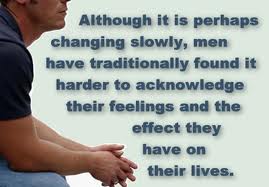
The social conditioning many men grow up with often inhibts their ability to access and express their feelings.
In another interview the contact summerized it for some of the ohers. “I believe men do not want to contact whatever resources are out there because of a genuine concern about being put when feeling weak or vulnerable.” He continued with a face washed in emotion, “Most women I’ve talked to keep towing the party line and say men need to take anger management classes and maybe we do. However, what they do not understand is that our anger is outer expression of other deeper feelings that we do not know how to handle.
Anger is the one emotion men are able to demonstrate as a ‘gender societal norm.’ Males display that in the sports arena and the crowds cheer. Nevertheless, how many men, women or children are equipped to handle a sobbing male who is overwhelmed with life? From childhood, men soldier on regardless of how they are feeling or what they are going through. Unfortunately most men I know have never been shown another way to do it…so we stay in our comfort zones of familiarity and when that doesn’t work…we end it. I have had a couple of close friends admit to being physically and emotionally abused by the women in their lives but they are unwilling to seek help much less discuss their problems with anyone…especially other men. There is a tendency for men to diminish each other if and when we take the risk to reveal painful, troubling emotions. Then there are still others who were molested in youth and they walk around as wounded warriors hiding their shame rather than finding ways to heal and release it.

Men who are abused often repress the lasting effects due to gender bias and stereotypical conditional.
Men thrive if they have a project to manage, re-build or construct…that we can do. Comparatively, ask us to organize a system that would support our physical, emotional, psychological and spiritual well-being and fell lost. That is why many modern men are floundering or leaving the life they had in whatever form, they do it. “ As my fingers clicked the keys on this article, I understood the differences in how men and women approach self-health needs. The women ’s movement fostered change, continues to provide resources and supports to assist them in healing, independence, and empowered living. It is time to address offer men equal opportunities.
Social stigma
Dr. Sig Heibert and Randy Hildebrand from Eden Mental Health Centre suggested there are a number of reasons why both men and women may be reluctant to seek psychological help. One of the main factors is the social stigma associated with mental health problems. Gender socialization can make it difficult for men to admit they are having difficulty coping, so they continue to suffer in silence. That pattern can lead to addictions, violence or spousal and family abuse. When this occurs, there is a fear of the justice system. These concerns about openly confronting personal problems interfere with their ability to make proactive decisions. Courses in anger management and partner abuse, provide coping skills and healthy self-management techniques.
Counselors in the field of men and mental health indicate that mature men from all occupations, up to that point, have no role models to assist them in discovering alternative ways to think and behave. A central crisis line or service directed to men and their issues could provide what is currently missing. As men and women, address the lack of resources for men there is greater potential for both genders to implement services that meet men at their point of need.
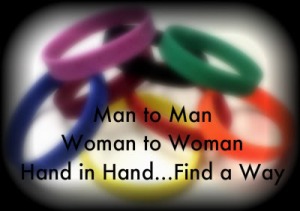
Men and Women hand and hand can lead to the creation of resources to assist men in their self-health needs.
Excerpt from What Your Mother Couldn’t Tell You & Your Father Didn’t Know by John Gray
P. 56, 1994, Harper Collins 427 pages,
Silently Sitting on a Rock
It is crucial to remember that one of the most significant differences between men and women is that while women cope with stress through sharing in nurturing relationships, men cope through solving problems. Traditionally, men assess options and when there do not appear to be any they look for alternatives. Ancient hunters would sit on a rock and silently search the horizon, looking and listening for their prey, or looking across the plains at their target, studying its movements and planning the attack.
This process of sitting, waiting, scheming, and planning allowed him to relax and conserve energy for the inevitable chase. Focusing keep his mind away from the fear of being attacked or of missing his target. When he achieved the goal, he returns home a happy, stress-free man.
Why Men Watch TV
When a modern man comes home, quite commonly, he sits in his favorite chair and either reads the newspaper or watches TV. Like the ancient hunter who needed to recover from the stress of his day, he instinctively finds his rock to sit on and begins gazing off into the horizon. Through reading or listening to the news he is, in effect, looking out over the world or scanning the horizon. As he picks up the remote control and begins searching through the stations, or turns the pages of his paper, he is once more in control: he silently and swiftly continues his hunt. As he assumes this ancient posture, deep and reassuring feelings of security begin to emerge. Feeling in control, he is able to cope with the stress of not having immediate solutions to the problems of his life. Through this instinctive ritual, he is able to temporarily forget his problems at work and is eventually ready for the relationship.
De-clutter Life and Live More Freely
By Coralie Raia Darsey-Malloy
This article was previously published in the Aquarium Newspaper and after 30 days from the print date this author has all rights reserved.
You will never know what is enough…
Unless you know what is more than enough.
–William Blake
David and I have been presenting courses on de-cluttering and self-management since the mid 1990’s after Creative Retirement Manitoba asked us to write, produce and present a seminar with the above focus. Clutter shows up in many forms, mental, emotional and physical. The teachings within Fung Shui and Ancient Native American cultures suggest that all forms of life and the elements are transient, swirling patterns of energy.
Life force (Chi) flows internally through each of us and externally throughout our surroundings. Depending on how the energy moves, these two energetic patterns can support harmony or disharmony, health or disease. Once a person begins to assess the constricting energy aspects of clutter they are often more motivated to create order inwardly and outwardly.
With a clear intent to harmonize and clarify the energy within inner/outer landscapes the space moves into higher resonances. This often leads to a reduction in stress and an overall improvement in health and well-being.
For those who are used to living within their clutter the idea of letting it go can feel daunting and overwhelming. In the courses our company presents on reducing clutter the first suggestion is to assess what the outer clutter represents.
Hoarding often comes from patterns of conditioned thinking, fear and poverty consciousness. The most common reason for not letting things is a belief it might be needed again. Others feel comforted by their clutter. For some, there is an attachment to objects because they belonged to someone who has moved on in whatever form that may be. The reason why “things” are packed away rather than being used or enjoyed is something to consider. While working with clients the guideline we use is summarized in a quote by Jimmy Conners to use it… it or lose it.
Excess material possessions that outlive their purpose can clog living spaces. In our understanding of energy, flow, releasing and renewal, it is importance to let go of the old to make room for the new. For those who have sentimental attachments to items we suggest taking a photograph with them or them. The memories remain whether the item is there or not. That approach assists clients in releasing items. Gifting to friends and loved ones is another option as is repurposing them or giving to charities or thrift stores. For some, that approach is easier than throwing treasured items in the trash. One of the best ways to begin to let things go is to accept that holding on to rather than releasing leaves little room for the Universe to provide more. After all when there is so much “packed” energy with congested lifestyle…where is the opportunity or opening for something fresh and new to flow into it?
The intention to simplify one’s space fits into the recycle and reuse idea and just one of the many reasons I feel so passionate about thrift store shopping. Many of our clients feel better about letting their gently used items go when they know they are unconditionally giving them away to someone who may need it.
Mental/emotional clutter often shows up in a “busy-ness” syndrome. People cram their lives with so many projects, events, commitments that there is little time or energy left to keep their space in “divine order.” All time management begins with self-management and the world will not come to an end if a decision is made to create an absolute priority list and say “no.”
Simplifying one’s life requires a multi-tiered process that involves some thoughtful soul searching about who and what really matters.
GUIDELINES FOR DE-CLUTTERING:
The key to getting organized is to focus. Initially the tendency might be to flit from one area to another, but completing one before moving on is far more effective. It is easier to get started on what may seem like a monumental task if the process is broken down into smaller projects.
Draw a planning sheet with two columns and mark one “Weekend” and the other “Project.” Place it in a prominent area (fridge, bulletin board or mirror.) That way your goals will be in full view. Here is a suggested six-week plan of action:
Weekend 1: Closets & Drawers
Clean and organize all closets throughout the house/apartment. Clients we work with are asked a few basic questions to assist them in reframing things. If the item does not make them happy and they are not using or wearing it…why not give it to someone who will? Having “fat/thin” wardrobes often leads to unwanted clutter, regrets and low self esteem. If clothes do not fit for ANY reason…we suggest lovingly giving it to a favorite charity with no regrets. Newer clothes can be purchased when the body size changes.
Once again thrift stores have great clothing and very reasonable prices. Same principle applies for shoes that are uncomfortable, worn or out of style. Weed out all items that have not been worn in a year or longer. Apply the same principle to outdoor gear, mitts, scarves and gloves without mates. Items that have sentimental value can be appropriately stored towards the back of the closet. Tattered sheets, table cloths and towels can be turned into “rag bags” for cleaning. Extra towels, blankets and sheets can also be given away or donated to thrift stores.
Weekend 2: Paper
Gather, organize, toss or recycle accumulated paper in the house, garage and work areas. Go through warranties and expired polices, outdated catalogs, coupons, and old bank statements unsolicited mail and either shred, burn or toss them. Throw away used grocery lists, receipts, old film and batteries and all the “stuff” that is of no real use. Decide to go through those “piles of paper” and choose what you need to keep and file them…then toss the rest. While doing that pull records and receipts for tax purposes and put them in a storage box marked “current year.” That puts you ahead of the game for filing taxes.
Weekend 3: Reading
it can be hard to consider recycling piles of magazines and beginning again. Removing all but the current issues of favorite new magazines is an option…the rest really is old news. The approach we suggest in our seminars is to take a magazine, scan the table of content and pick a maximum of three articles. Tear them out and put them in a file folder…if there really is intent to make time to read them. Otherwise pass them on. To avoid falling back into the same pattern we suggest subscribing to a clipping service or downloading articles to your PC from the Internet. If books and magazines are an absolute “need” rather than a “want” taking a speed reading course is another option.
Weekend 4: Correspondence
Check e-mails daily and responding promptly keeps efficiency levels high and reduces a cluttered mailbox. Sort through snail mail daily and recycle what outdated. Create a file for monthly bill payments. An efficient way of remembering all birthday and anniversary dates is create file folders marked with the months of the year and shop for ALL of the cards once a year.
Mark the important date of the person’s event in light pencil where the stamp will be placed and file it. At the beginning of each month review the folder and mail cards and well wishes out. This approach assures that birthdays and anniversaries will not be missed.
Weekend 5: Storage
Clutter’s last stand usually shows up in the basement, garage, attics or shed. The biggest problem comes when items are stacked items atop one another. When a box storage system is created the clutter can be eliminated. Choose boxes that are strong and the same size and shape and create shelving system. Repack items that must be stored in a new box and clearly label the contents on the side. Store them in alphabetical order on each shelf. That way it is easier to retrieve boxes from the bottom of the pile.
Items that quality for storage are holiday material, hand-me-down clothes a child can wear soon, maternity clothing and infrequently used items such as camping or seasonal sports gear. The question of memorabilia can be a challenging one. Our suggestion is one box or trunk per person. Unwanted, unused gifts should not be kept because of the thought behind it. Take a picture, or keep the thought behind and pass unwanted items on. Images and thoughts take up a lot less space.
Weekend 6: Fix-it
This weekend implements the “time management begins with self-management” idea. Gather up and everything that needs to be fixed. Make a list of all the places you need to go or repairmen that will come to you. If it can’t be repaired then throw it away. Use this weekend to do oil changes, catch up on calls and correspondence.
After you have some momentum going, keep going! Weekend 7 could be cabinets, 8, photographs, 10 making an “absolute yes” list for commitments, social engagements and community event, Weekend 10 could be a “breathing space” respite where you kick back and enjoy the sense of accomplishment and freed up energy.
Once you get clutter under control be sure to keep on top of it so it doesn’t creep back in. Developing habit patterns or order and simplified living makes it easier to making a home for everything and keeping everything in its place. With specific goals and designated time for completion it becomes easier to plan for successful outcomes in manageable increments. Anytime is the perfect time to reduce clutter. Each stage of release frees time and energy and adds to the ability to manage time and energy more efficiently. Enjoy!
For more information about our de-cluttering coaching, interactive workbooks and seminars check out the Fresh Beginnings website at www.fresh-beginnings.com with the specific page link on de-cluttering. http://www.fresh-beginnings.com/De-Clutter.html
Perspectives on Life Extension
By Coralie Raia Darsey-Malloy
This blog is a combination of personal experience with some information from Wikipedia.
This blog post explores some of the research and information about life extension and biological regeneration. There are many in the new age movement who believe that the energetic aspect of one’s innate spiritual nature has the potential to transform one’s biology and promote the changes needed to live well and strong into advanced years.
My birthday is on New Year’s Eve and at the beginning of the next journey around the sun adds to a belief that it is possible to remain youthful and strong into advanced years. Whatever it is there is a burgeoning interest and scientific study in life extension, immortality and youthful aging. I wrote this article to present some of the perspectives, ideas, beliefs and answered questions about the possibility and/or probability within some of this issues and concerns. One thing is inarguable is that humanity has already extended their lifespan over those of our ancestors. Whether we will continue to be able to do so will remain to be seen…and experienced. If extended longevity does not occur in our lifetime, there is a very real possibility that it will for future lifetimes.
Youth is generally the time of life between childhood and adulthood (maturity). Definitions of the specific age range that constitutes youth vary. An individual’s actual maturity may not correspond to their chronological age, as immature individuals can exist at all ages. Youth is also defined as “the appearance, freshness, vigor, spirit characteristic of one who is young.” Youth is a term used for people of both genders, male and female, of young age. The term “youth” usually refers to individuals between the ages of 16-24. Around the world, the terms “youth”, “adolescent”, “teenager”, “kid”, and “young person” are interchanged, often meaning the same thing, occasionally differentiated. Youth generally refers to a time of life that is neither childhood nor adulthood, but rather somewhere in-between. Youth is an alternative word to the scientifically oriented adolescent and the common terms of teen and teenager. Another common title for youth is young person or young people.
The term youth also identifies a particular mindset of attitude, as in “he/she is very youthful”. The term youth is also related to looking, feeling and BE-ING young or in a state of “youthfulness.” It is aptly interpreted in a quotation by Robert Kennedy. “This world demands the qualities of youth: not a time of life but a state of mind, a temper of the will, a quality of imagination, a predominance of courage over timidity, of the appetite for adventure over the life of ease.”
With more people living into advanced years there is a growing interest in the idea of “youthing while aging. This view involves new constructs within self-concepts. The self-perception of youth is influenced by several variables such as peers, lifestyle, gender and culture. Within this context, aging involves attitude and life choices to sustain “youthfulness.” Those who are genuinely interested in aging well and life extension science involves a number of co-factors.
Life extension science is an umbrella term that is also referred to as anti-aging medicine, experimental gerontology, and biomedical gerontology, is the study of slowing down or reversing the processes of aging to extend both the maximum and average lifespan. Some researchers in this area, and “life extensionists” or “longevists” (those who wish to achieve longer lives themselves), believe that future breakthroughs in tissue rejuvenation with stem cells, molecular repair, and organ replacement (such as with artificial organs or xenotransplantations will eventually enable humans to have an indefinite lifespan (agerasia) with rejuvenation in healthy, strong youthful conditions.
The sale of putative anti-aging products such as nutrition, physical fitness, skin care, hormone replacements, vitamins, supplements and herbs is a lucrative global industry, with the US market generating about $50 billion of revenue each year. Medical experts state that the use of such products has not been shown to affect the aging process, and many claims of anti-aging medicine advocates have been roundly criticized by medical experts, including the American Medical Association. However, it has not been shown that the goal of indefinite human life spans itself is necessarily unfeasible; some animals such as lobsters and certain jellyfish do not die of old age, and an award was offered to anyone who could prove life extensionist Aubrey de Grey’s hopes were ‘unworthy of learned debate’; nobody won the prize. The whole question of life extension has branched out and Bioethicists question the ethical ramifications of life extension.
There has been and continues to be extensive research on how diet, lifestyle, nutrition and supplements and how they may or may not extend life or add to the quality of it during the aging process. The many diets promoted by anti-aging advocates are often contradictory. A dietary pattern with some support from scientific research is caloric restriction. The free-radical theory of aging suggests that antioxidant supplements, such as Vitamin C, Vitamin E, Q10, lipoic acid, carnosine, and N-acetylcysteine, might extend human life. However, combined evidence from several clinical trials suggests that β-Carotene supplements and high doses of Vitamin E increase mortality rates. Other substances proposed to extend lifespan include oxytocin, insulin, human chorionic gonadotropin (hCG), and erythropoietin (EPO). Resveratrol is a sirtuin stimulant that appears to extend lifespan in simple organisms such as nematodes and short-lived fish.
Some supplements, including minerals selenium or zinc] have been reported to extend one’s lifespan in rats and mice. However, the results have not been replicated in humans. There is concern for toxicity in high concentrations. Metformin is another supplement that may extend lifespan but the studies are only in preliminary stages. Interestingly there is a tea called Jiaogulan that has been dubbed China’s “Immortality Herb” but more studies need to be done to confirm any of the above findings. The discussion whether aging should be viewed as a disease or not has important implications. It would stimulate pharmaceutical companies to develop life extension therapies and in the United States of America, it would increase the regulation of the anti-aging market by the FDA. Anti-aging falls under the regulations for cosmetic medicine which and are less regulated than drug therapy.
The anti-aging industry offers several hormone therapies. Some of these have been criticized for possible dangers to the patient and a lack of proven effect. For example, the American Medical Association has been critical of some anti-aging hormone therapies. Even if some recent clinical studies have shown that low-dose GH treatment for adults with GH deficiency changes the body composition by increasing muscle mass, decreasing fat mass, increasing bone density and muscle strength, improves cardiovascular parameters (i.e. decrease of LDL cholesterol), and affects the quality of life without significant side effects.
The evidence for use of growth hormone as an anti-aging therapy is mixed and based on animal studies. An early study suggested that supplementation of mice with growth hormone increased average life expectancy. Additional animal experiments have suggested that growth hormone may generally act to shorten maximum lifespan; knockout mice lacking the receptor for growth hormone live especially long. Furthermore, mouse models lacking the insulin-like growth factor also live especially long and have low levels of growth hormone
People suffering from rare condition known as Laron syndrome have mutation in the gene that makes the receptor for growth hormone. It’s theorized that that mutation may hold a key to life extension. Dr. Longo said that some level of IGF-1 was necessary to protect against heart disease, but that lowering the level might be beneficial. A drug that does this is already on the market for treatment of acromegaly, a thickening of the bones caused by excessive growth hormone. “Our underlying hypothesis is that this drug would prolong life span,” Dr. Longo said. He said he was not taking the drug, called pegvisomant or Somavert, which is very hard to obtain. There is a considerable amount of scientific controversy regarding anti-aging nutritional supplementation and medicine and it is important that consumers educate themselves and make informed choices before looking for a magic bullet with their anti-aging and longevity goals.
Some experts categorize aging as a disease. While others dispute that diagnosis and label. Many critics dispute the portrayal of aging as a disease and scientist Leonard Hayflick, determined that fibroblasts are limited to around 50 cell divisions, reasons that aging is an unavoidable consequence of entropy. Hayflick and fellow biogerontologists Jay Olshansky and Bruce Carnes have strongly criticized the anti-aging industry in response to what they see as unscrupulous profiteering from the sale of unproven anti-aging supplements.
In the United States, product claims on food and drug labels are strictly regulated. The First Amendment (freedom of speech) protects third-party publishers’ rights to distribute fact, opinion and speculation on life extension practices. Manufacturers and suppliers also provide informational publications, but because they market the substances, they are subject to monitoring and enforcement by the Federal Trade Commission (FTC), which polices claims by marketers. What constitutes the difference between truthful and false claims is hotly debated and is a central controversy in this arena.
Research by Sobh and Martin (2011) suggests that consumers on the anti-aging bandwagon are driven to purchase products that will provide hoped-for results (e.g., keeping a youthful skin) or to avoid a feared-self (e.g., looking old). The research shows that when consumers pursue with this in mind their expectations for success drive their motivation. Even when their purchases do not provide the desired outcome, they continue to search and buy similar items in a driving desire to avoid what they fear within their aging process. In this rapidly advancing aspect of consumerism, it is good to maintain a “buyers beware” mindset. Anything that sounds too good to be true may be. This emerging branch of science and medicine is bringing interesting possibilities for healthy aging and life extension but it still has a long way to go for anyone to “know for sure” that ageless living is truly possible.
Nanotechnology is a branch of medicine that could give rise to life extension through the repair of many processes thought to be responsible for aging. K. Eric Drexler, one of the founders of nanotechnology, postulated cell repair machines, including ones operating within cells and utilizing yet hypothetical molecular computers, in his 1986 book Engines of Creation. Raymond Kurzweil, a futurist and transhumanist, stated in his book The Singularity Is Near that he believes that advanced medical nanorobotics could completely remedy the effects of aging by 2030.
Some life extensionists suggest that therapeutic cloning and stem cell research could one day provide a way to generate cells, body parts, or even entire bodies (generally referred to as reproductive cloning) that would be genetically identical to a prospective patient. Recently, the US Department of Defense initiated a program to research the possibility of growing human body parts on mice. Complex biological structures, such as mammalian joints and limbs, have not yet been replicated. Experiments with dogs and primates and transmutation experiments failed when they were unable to restore nerve connections. As of 2006, the implantation of bio-engineered bladders grown from patients’ own cells has proven to be a viable treatment for bladder disease. Proponents of body part replacement and cloning contend that the required biotechnologies are likely to appear earlier than other life-extension technologies.
The use of human stem cells, particularly embryonic stem cells, is controversial. Opponents’ objections generally are based on interpretations of religious teachings or ethical considerations. Proponents of stem cell research point out those cells are routinely formed and destroyed in a variety of contexts. Use of stem cells taken from the umbilical cord or parts of the adult body may not provoke controversy. The controversies over cloning are similar, except general public opinion in most countries stands in opposition to reproductive cloning. Some proponents of therapeutic cloning predict the production of whole bodies, lacking consciousness, for eventual brain transplantation.
For cryonicists (advocates of cryopreservation), storing the body at low temperatures after death may provide an “ambulance” into a future in which advanced medical technologies may allow resuscitation and repair. They speculate cryogenic temperatures will minimize changes in biological tissue for many years, giving the medical community ample time to cure all disease, rejuvenate the aged and repair any damage that is caused by the cryopreservation process. Many cryonicists do not believe that legal death is “real death” because stoppage of heartbeat and breathing—the usual medical criteria for legal death—occur before biological death of cells and tissues of the body. Even at room temperature, cells may take hours to die and days to decompose.
Although neurological damage occurs within 4–6 minutes of cardiac arrest, the irreversible neurodegenerative processes do not manifest for hours. Cryonicists’ state that rapid cooling and cardio-pulmonary support applied immediately after certification of death can preserve cells and tissues for long-term preservation at cryogenic temperatures. People, particularly children, have survived up to an hour without heartbeat after submersion in ice water. In one case, full recovery was reported after 45 minutes underwater. To facilitate rapid preservation of cells and tissue, cryonics “standby teams” wait by the bedside of patients who are to be cryopreserved. They apply cooling and cardio-pulmonary support as soon as possible after declaration of death. No mammal has been successfully cryopreserved and brought back to life, and resuscitation from cryonics is not possible with current science. Some scientists still support the idea based on their expectations of the capabilities of future science.
Another proposed life extension technology combines existing and predicted future biochemical and genetic techniques. SENS proposes that rejuvenation may be obtained by removing aging damage via the use of stem cells and tissue engineering, removal of telomere-lengthening machinery, allotopic expression of mitochondrial proteins, targeted ablation of cells, immunotherapeutic clearance, and novel lysosomal hydrolases. There is no scientific evidence that supports this strategy, and Robin Holliday called SENS “overly ambitious”.
Some of the other strategies being considered for future are gene therapy. This is a process where artificial genes are integrated with an organism to replace mutated or otherwise deficient genes. Targeting catalase to the mitochondria resulted in a 20% lifespan increase in transgenic mice, and improved performance in AAV therapeutically infected mice. In The Selfish Gene, Richard Dawkins describes an approach to life-extension that involves “fooling genes” into thinking the body is young. Dawkins attributes inspiration for this idea to Peter Medawar. The basic idea is that our bodies are composed of genes that activate throughout our lifetimes, some when we are young, and others when we are older. Presumably, these genes are activated by environmental factors, and the changes caused by these genes activating can be lethal. It is a statistical certainty that we possess more lethal genes that activate in later life than in early life. Therefore, to extend life, we should be able to prevent these genes from switching on, and we should be able to do so by “identifying changes in the internal chemical environment of a body that take place during aging… and by simulating the superficial chemical properties of a young body”.
History of life extension and the life extension movement
In 1970, the American Aging Association was formed under the impetus of Denham Harman, originator of the free radical theory of aging. Harman wanted an organization of biogerontologists that was devoted to research and to the sharing of information among scientists interested in extending human lifespan. In 1976, futurists Joel Kurtzman and Philip Gordon wrote No More Dying. The Conquest Of Aging And The Extension Of Human Life, (ISBN 0-440-36247-4) was the first popularized book on research to extend human lifespan. Subsequently, Kurtzman was invited to testify before the House Select Committee on Aging, chaired by Claude Pepper of Florida, to discuss the impact of life extension on the Social Security system.
Saul Kent published The Life Extension Revolution (ISBN 0-688-03580-9) in 1980 and created a nutraceutical firm called the Life Extension Foundation, a non-profit organization that promotes dietary supplements. The Life Extension Foundation publishes a periodical called Life Extension Magazine. The 1982 bestselling book Life Extension: A Practical Scientific Approach (ISBN 0-446-51229-X) by Durk Pearson and Sandy Shaw further popularized the phrase “life extension”. In 1983, Roy Walford, a life-extensionist and gerontologist, published a popular book called Maximum Lifespan.
In 1988, Walford and his student Richard Weindruch summarized their research into the ability of calorie restriction to extend the lifespan of rodents in The Retardation of Aging and Disease by Dietary Restriction (ISBN 0-398-05496-7). The work of Clive McCay in the 1930s shows that calorie restriction can extend the maximum lifespan of rodents. Nevertheless, the work of Walford and Weindruch provides detailed scientific research in this field of study, [citation needed] Walford’s personal interest in life extension motivated his scientific work and he practiced calorie restriction himself. Walford died at the age of 80 from complications caused by amyotrophic lateral sclerosis.
Money generated by the non-profit Life Extension Foundation allowed Saul Kent to finance the Alcor Life Extension Foundation, the world’s largest cryonics organization. The cryonics movement had been launched in 1962 by Robert Ettinger’s book, The Prospect of Immortality. In the 1960s, Saul Kent had been a co-founder of the Cryonics Society of New York. Alcor gained national prominence when baseball star Ted Williams was cryonically preserved by Alcor in 2002 and a family dispute arose as to whether Williams had really wanted to be cryopreserved. Regulatory and legal struggles between the Food and Drug Administration (FDA) and the Life Extension Foundation included seizure of merchandise and court action. In 1991, Saul Kent and Bill Faloon, the principals of the Foundation, were jailed. The LEF accused the FDA of perpetrating a “Holocaust” and “seeking gestapo-like power” through its regulation of drugs and marketing claims. In 1992, the American Academy of Anti-Aging Medicine (A4M) was formed to create what it considered an anti-aging medical specialty distinct from geriatrics, and to hold trade shows for physicians interested in anti-aging medicine. The American Board of Medical Specialties recognizes neither anti-aging medicine nor the A4M’s professional standing.
Even though there are numerous scientists claiming that life extension and radical life extension are possible there aren’t any international or national programs focusing on radical life extension. There are political forces staying for and against life extension. In 2012 in Russia, and then in USA, Israel and Netherlands the Longevity political parties started. They aimed to provide political support to radical life extension research and technologies and ensure fastest possible and at the same time soft transition society to the next step – life without aging and with radical life extension and provide such the access to such technologies to the most of the currently living people.
Leon Kass (chairperson of the US President’s Council on Bioethics from 2001 to 2005) has questioned whether potential exacerbation of overpopulation problems would make life extension unethical.] He states his opposition to life extension with the words: “simply to covet a prolonged life span for ourselves is both a sign and a cause of our failure to open ourselves to procreation and to any higher purpose. The desire to prolong youthfulness is not only a childish desire to eat one’s life and keep it; it is also an expression of a childish and narcissistic wish incompatible with devotion to posterity. John Harris, former editor-in-chief of the Journal of Medical Ethics, argues that as long as life is worth living, according to the person himself, we have a powerful moral imperative to save the life and thus to develop and offer life extension therapies to those who want them.
Comparing perspectives on the subject of life extension Transhumanist philosopher Nick Bostrom argues that any technological advances in life extension must be equitably distributed and not restricted to a privileged few. In an extended metaphor entitled “The Fable of the Dragon-Tyrant”, Bostrom envisions death as a monstrous dragon who demands human sacrifices. In the fable, after a lengthy debate between those who believe the dragon is an unpleasant fact and those who believe the dragon can and should be destroyed, the dragon is finally killed. Bostrom argues that political inaction allowed many preventable human deaths to occur.
